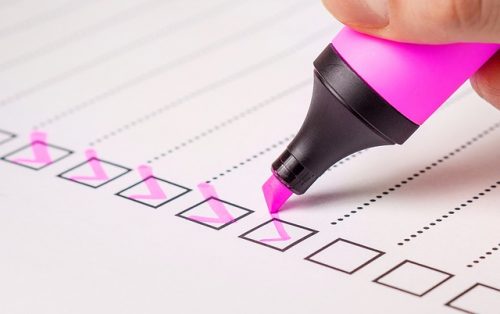You’ve powered through your essay and have a pretty good draft in front of you. But now you’re coming up to the conclusion, and all the usual questions start rattling around in your head.
Did you include enough evidence to support your arguments? Should you write more, or would that just make your essay sound more redundant?
Are you really ready to end your essay? And if so, what are the right words to give it the same impact and energy as the rest of your writing?
It can all get a little overwhelming.
And while every conclusion won’t be a piece of cake after this, once you figure out how to end an essay and practice a bit, it gets easier every time.
So let’s get started talking about how to end an essay.
What Is a Conclusion?

I know what you’re thinking… we learned what conclusions are in elementary school.
You may have learned the definition of a conclusion, but I bet you didn’t learn how to end an essay with confidence. Part of that is because many classrooms don’t go into conclusions in depth. Instead, they just tell you that it’s a summary of your main points.
While this may be true, it’s not just a summary. It’s a way to tie up any loose ends. It’s the final thought that leaves an impact on your reader. It’s what brings the whole essay together and makes it sound polished.
What a conclusion is only gives you half the story—you also have to know what a conclusion is not.
A conclusion is not an opportunity to add new information. It’s not just a restatement of your thesis.
A conclusion also isn’t a chance to phone it in at the last minute.
Now that we have some of the technicalities out of the way, it’s time to get into the finer details on how to end an essay with confidence.
What to Do and How to Do It

Most conclusions aren’t as long or as detailed as your body paragraphs. However, they are necessary because they tie everything together and make your essay sound complete.
For the majority of essays, your conclusion should have three components:
- A summary of your main points
- Answers to any potential reader questions
- An interesting final note
Let’s dive into each of these.
A summary of your main points
The summary of your main points is easier and more pleasant to read if it uses different language than your thesis statement or the topic sentences of your body paragraphs. If you really want to make an impact, use some metaphors or descriptive language.
For example, if I was writing an essay about how important conclusions are, I wouldn’t just say:
In conclusion, conclusions are important because they make an essay sound complete, they tie up loose ends, and they leave readers with a positive overall impression.
Instead, this part of my conclusion might read:
Conclusions have the power to transform students’ writing from a hastily finished draft into a complete, polished essay. They give readers closure and make the essay stand out among the rest.
The second example is not over the top, but it sounds much more like an ending than a beginning.
Answers to any potential reader questions
This conclusion component isn’t always necessary. However, if you raise questions in the introduction or body paragraphs, you need to give your readers some relief.
If you have the time, I suggest at this step to take a break from your essay—a few minutes will do—before you come back and read it from the beginning. This lets you see it a little more as the reader instead of the writer.
You’ll see whether there are any loose ends. If there are, the conclusion is the perfect spot to take care of them.
An interesting final note
Start strong, end strong. Your introduction started with a hook, so why shouldn’t your conclusion have an interesting point too?
There are several ways to do this. One is to ask a rhetorical question. This makes readers think about the deeper implications of your essay or how the essay relates to their lives.
Another way to add some interest to your conclusion is to twist the beginning into something new.
For example, say we have an essay about the effects of social media on interpersonal relationships. The introduction would state the ways social media impacts its users, but the conclusion can twist it somewhat and open it up to a larger context:
While some may argue that social media makes people less capable of face-to-face communications, it opens people up to collaboration, education, and a whole list of ever-expanding possibilities.
What to Avoid and How to Avoid It

There are only two things to avoid when writing a conclusion: ending too abruptly and rambling. This isn’t a too-short vs. too-long scenario.
The length of your conclusion depends on the length and complexity of your essay.
It all boils down to the question of whether your essay feels whole.
Ending too abruptly
To avoid this pitfall, simply follow the steps above. Make sure you have all three parts (if you have any unanswered questions, that is).
Most students who end their conclusions too soon only get to the summary part. Some do an almost word-for-word copy of the thesis statement.
Don’t do that.
Instead, round it out with more detailed language and an interesting closing note. And don’t worry—it gets easier with practice.
Rambling
Rambling happens for two different reasons. Either you don’t know where to end so you just keep writing, or you add new information that should be in the body paragraphs.
If you’re rambling because you don’t know when to stop, make sure you have all the right components of a conclusion, and reread what you have.
If there are accidental redundancies or confusing language, get rid of it. Your conclusion might be shorter, but it’ll also be clearer.
If you’re adding new information, decide where it should go in the body. The conclusion isn’t the time to bring up new ideas. It’s a time to reflect on what you wrote.
Conclusions You Can Learn From
Now that you know how to end an essay theoretically, let’s put some of these rules into practice. Here are a few examples of both bad and good conclusions.
(There are even more examples of good conclusions here.)
Topic #1: Explain how love causes violence in Romeo and Juliet
In Romeo and Juliet, virtually every instance of violence is caused, at least in part, by extreme love or passion. Tybalt vows to kill Romeo the same night Romeo sees Juliet for the first time. There are also several threats of suicide because the protagonists are so in love with each other that they cannot imagine life without each other. Romeo and Juliet commit suicide because of their impatience (and a lack of communication), which is a side effect of both their youth and their obsessive love.
This conclusion is long-winded, presents new information (the lack of communication part), and just doesn’t seem to flow well. Here’s a better way to write it.
Romeo and Juliet proves that love and violence are not opposites—they are linked. From the time Romeo sees Juliet and makes Tybalt angry to the final death scene, the main characters’ obsessive love leads to their destruction. Even as Juliet stood at death’s doorstep, she muddled the line between love and violence, uttering the famous words, “Thus with a kiss, I die.”
Topic #2: How does the symbolism of the scarlet “A” change throughout The Scarlet Letter?
The scarlet “A” Hester had to wear is first a mark of shame but then transforms into a badge of honor once she embraces her true nature.
This conclusion is far too basic—just a simple restatement of the main point of the essay.
Instead, try something like this:
The rules of Puritan New England branded Hester, making her an outcast. But she never turns her back on her neighbors. The scarlet letter that once made her stand out in the beginning of the novel transforms into a symbol of power and leadership. Hester proves more loving and ethical than those who condemn her as a sinner, showing that what some may consider to be flaws can end up being the biggest assets.
One Last Note
Reading about how to end an essay can only get you so far. Now you just have to jump in and do it. But don’t worry—Kibin editors are here to lend their eyes (and their awesome editing powers).
They’ll help ensure your essay is as well-written as possible, from the first word of the introduction to the last word of the conclusion.
 Conclusions have the power to transform students’ writing from a hastily finished draft into a complete, polished essay. They give readers closure and make the essay stand out among the rest.
Conclusions have the power to transform students’ writing from a hastily finished draft into a complete, polished essay. They give readers closure and make the essay stand out among the rest.